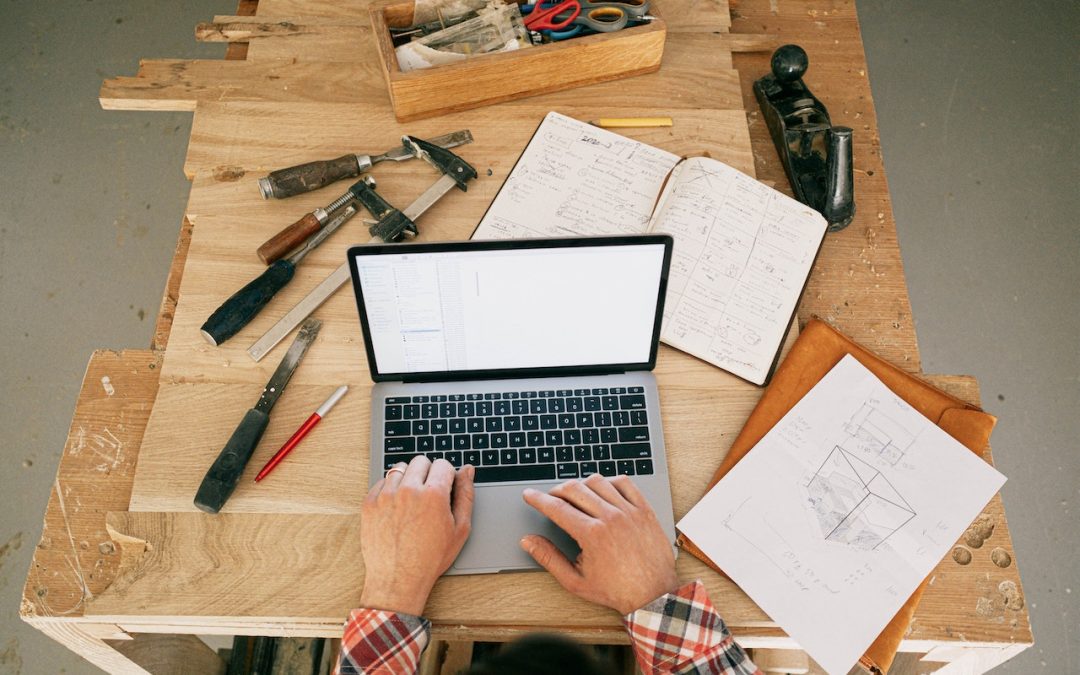Hot Air Edgebanding is a modern technique used in woodworking to apply a thin strip of material, known as edgeband, to the exposed edges of furniture or other wooden surfaces. This process involves the use of hot air to activate a heat-activated adhesive on the edgeband, which is then pressed onto the edge of the workpiece to create a seamless and durable finish.
The main difference between Hot Air Edgebanding and the normal procedure for edgebanding lies in the application of heat. In traditional edgebanding, heat is typically applied through a heated iron or a hot-melt adhesive system. This requires manual control of the heat source and careful handling to ensure proper adhesion.
Hot Air Edgebanding, on the other hand, utilizes a specialized machine equipped with heating elements and a controlled airflow system. Edgebander machines directs hot air onto the edgeband, activating the heat-activated adhesive and creating a strong bond with the workpiece. This automated process ensures consistent heat distribution and precise temperature control, resulting in a more uniform and reliable bond.
Another difference is the speed and efficiency of the Hot Air Edgebanding process. With the use of an edgebander machine, the edgeband is automatically fed, glued, trimmed, and pressed onto the workpiece, significantly reducing the time and effort required compared to manual edgebanding methods. This allows for faster production and increased productivity.
Hot Air Edgebanding also offers greater versatility in terms of materials and finishes. The heat-activated adhesive used in this process is compatible with various edgeband materials, including wood veneer, PVC, ABS, and melamine. Additionally, the temperature and airflow settings on the edgebander machine can be adjusted to accommodate different edge thicknesses and achieve desired finishes, providing more customization options.
How to do it manually?
The technique to do it manually utilizes a hot air gun and a specialized adhesive to create a strong and seamless bond between the edgebanding and the substrate. With its versatility and durability, hot air edgebanding has become a popular choice among woodworkers, cabinetmakers, and furniture manufacturers.
The process of hot air edgebanding starts with the preparation of the materials. Ensure that both the edgebanding and the substrate are clean, dry, and free from any dust or debris. It is crucial to have a smooth and even surface for the adhesive to adhere to properly. If necessary, sand or trim the edges of the substrate to achieve the desired smoothness.
Next, select the appropriate edgebanding for your project. Hot air edgebanding is available in various materials, including PVC, ABS, and veneer, each with its own unique characteristics and applications. Consider factors such as color, texture, and thickness to choose the edgebanding that best matches your project.
Before starting the application, set the hot air gun to the recommended temperature specified by the manufacturer. It is essential to use a hot air gun specifically designed for edgebanding, as it provides the necessary heat control and airflow for a successful installation. Additionally, make sure to wear protective gloves and safety goggles to protect yourself from potential burns.
To begin the hot air edgebanding process, position the edgebanding onto the edge of the substrate, leaving a slight overhang on both ends. The overhang will be trimmed later for a precise fit. Apply light pressure to hold the edgebanding in place, ensuring it is aligned properly with the edge of the substrate.
Using the hot air gun, direct the airflow onto the edgebanding, starting from one end and moving slowly and evenly along the length. The heat from the gun activates the adhesive on the back of the edgebanding, causing it to soften and bond with the substrate. It is crucial to maintain a consistent distance between the hot air gun and the edgebanding to prevent overheating or scorching.
As the adhesive softens, use a roller or a press block to firmly press the edgebanding onto the substrate, ensuring a strong and even bond. The roller helps eliminate any air bubbles or wrinkles, resulting in a smooth and seamless finish. Continue moving the hot air gun and applying pressure until the entire length of the edgebanding is securely bonded to the substrate.
Once the edgebanding is fully applied, allow it to cool and set for a few minutes. This cooling process helps the adhesive solidify and strengthen the bond. Afterward, use a sharp utility knife to trim the excess overhang flush with the edge of the substrate. Take your time to achieve clean and precise cuts, ensuring a seamless transition between the edgebanding and the surface.
Inspect the installed edgebanding for any imperfections or rough edges. If necessary, use a file or sandpaper to smooth out any rough spots or uneven edges, creating a flawless and professional finish. Finally, clean the surface with a damp cloth to remove any adhesive residue or dust.
Hot air edgebanding offers several advantages over other methods. The hot air gun allows for precise temperature control, ensuring optimal adhesive activation without damaging the materials. The flexibility of the edgebanding material allows it to conform to curved or irregular edges, expanding the design possibilities. Additionally, the strong bond created by hot air edgebanding provides excellent resistance to moisture, heat, and impact.
It is important to note that proper technique and attention to detail are crucial for a successful hot air edgebanding installation. Practice on scrap pieces before working on your actual project to familiarize yourself with the process and perfect your technique. Additionally, always follow the manufacturer’s instructions and safety guidelines when using hot air guns and adhesives.
In conclusion, hot air edgebanding is a versatile and reliable method for applying edgebanding to various materials. With the right tools, materials, and technique, you can achieve a seamless and durable bond that enhances the appearance and functionality of your woodworking projects.
However using Edgebander machines offers significant advantages over manual edgebanding. The speed, precision, versatility, safety, and productivity enhancements provided by these advanced machines make them indispensable in the woodworking industry.

